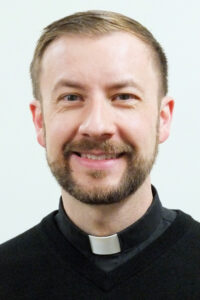By Thom Hennen
Question Box
Q. Why does the Church have liturgical cycles? Why do the Sunday and weekday lectionary cycles differ?
A. One of the things I love about living in Iowa is that we get to experience four distinct seasons. As human beings, I think we are innately “seasonal beings.” We need cycles. In the same way,

when it comes to how we worship, there is something in us that needs to do different things at different times of year. This, no doubt, derives from our connectedness to creation and its natural cycles. We live on planet earth and we are never totally disconnected from the earth in our worship of the God who made it, even as we are “caught up” in the heavenly liturgy. In fact, we invoke the imagery of creation throughout our worship. We are also innately sacramental beings, meaning that we use our bodies, our senses, signs and symbols to pray, to understand and to express meaning.
As the Church expanded and became more established, development was inevitable. As the celebration of the principle feasts of Easter and Christmas became more fixed in our practice, it made sense that there would be a lead-up to these holy days and so the seasons of Lent and Advent became more formalized and standardized over the centuries. Of course, we did not invent the concept of holy days or liturgical seasons. Our Jewish brothers and sisters were doing this sort of thing long before us, as they continue to do today. Christianity organically emerges from Judaism, keeping not only its Scriptures but also many of its customs and themes.
Last Sunday we brought a close to the Easter season with our celebration of Pentecost and have now moved back into Ordinary Time. It should be noted that Ordinary Time is so named not because there is nothing special going on until Advent but because of the ordering or numbering of weeks. Think of “ordinary” as in “ordinal.” Advent begins the new liturgical year and then after Christmas we begin Ordinary Time with our celebration of the Baptism of the Lord. We take a “time out” from Ordinary Time with the start of Lent, which is calculated by counting back 40 days (not including Sundays) from the date of Easter, which in turn is set as the first Sunday following the first full moon of the spring equinox. There’s creation again! This often (though not always) corresponds with the Jewish celebration of Passover. Following the 50 days of the Easter season, ending with Pentecost, we resume Ordinary Time (“time in”) with numbered weeks.
As for the lectionary cycle in its present form, we have the liturgical reforms following the Second Vatican Council to thank for that. Prior to the revised lectionary, there was a one-year cycle that covered much less of the whole Bible. Obviously, you can cover more territory in the readings for daily Mass with six days a week than just one day a week on Sundays. Therefore, there is a three-year cycle (A, B and C) for the Sunday readings and just a two-year cycle (years I and II) for the weekday readings. I came across an article online that provided some statistics on how much of the Bible is actually covered in the Sunday and weekday cycles. According to this article, in the current lectionary 13.5% of the Old Testament (not counting the Psalms) is covered and 71.5% of the New Testament. Just by coming to Mass and listening attentively to readings you are getting a good dose of the Bible!
(Father Thom Hennen serves as the pastor of Sacred Heart Cathedral in Davenport and Vicar General for the Diocese of Davenport. Send questions to messenger@davenportdiocese.org)











